
After the release of the Sony 12-24mm f/2.8 G Master lens, I thought that that was it: Sony finally released my dream lens. But on a call with Sony a few weeks ago I was told that “something was coming, and it had my name on it.”
That could only mean one thing: the one and only lens that was still missing for me in the Sony lens lineup was a fast wide-angle prime. And I was correct: the Sony 14mm f/1.8 GM is here!
Full disclosure: I am a Sony ambassador and I received the lens weeks before it was announced. This article is not called a “review” but is simply a summary of my impressions when using this lens in the field.
It’s Light!
And I know what you’re thinking. I was thinking it as well: This thing must be big and heavy. But we have been surprised by Sony in the past. Sony seems to utilize its mirrorless cameras and lenses the best when it comes to portability and weight. Their G-Master primes have (almost) always been lighter than the competition and it seems that the engineers challenge themselves by keep pushing the bar.
I remember I was shocked by the size and weight of the 24mm f/1.4. But the 14mm f/1.8 is on another level: It’s 460 grams only. And that’s a lot lighter than the Sigma 14mm f/1.8 (DSLR) lens. I don’t know how they did it, but they did. I wonder if the Sony engineers ever take a holiday?
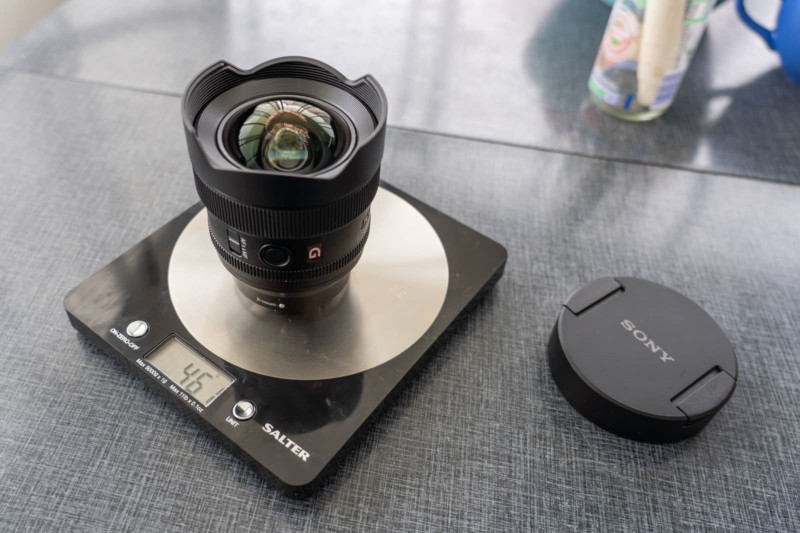
Now Sony doesn’t make things easier with this lens. There are just so many great Sony native wide-angle lenses on the market right now, and I love my 12-24mm GM. But what If I would bring the 14mm f/1.8 and the 24mm f/1.4 instead of the 12-24mm GM? All 3 lenses are great. And if you look at the total weight of the 14mm (460g) and 24mm (445g) which is just over 900g, the difference is only 50 grams over the 850g 12-24mm f/2.8 GM. But it’s very nice and versatile to use the 12-24 instead of having to switch between lenses.
This will be a tough choice for people I’m sure. But the bottom line is: With the 14mm f/1.8 Sony ‘completes’ an incredible native line up of wide-angle lenses.
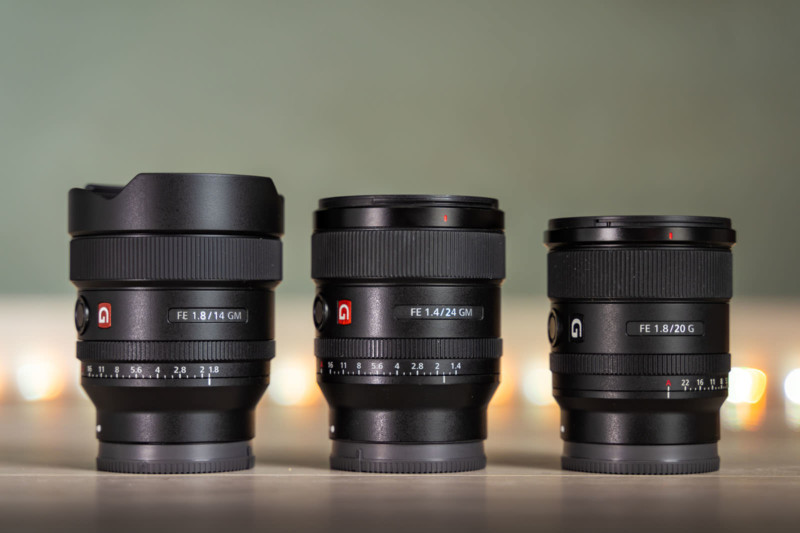
The Design
Now when we look at the lens we can see it is compact for its properties. It fits well in the lineup of Sony’s primes. When we see it next to the 24mm f/1.4 we can see it’s only slightly bigger. Mounted on the Sony A7RIV body it doesn’t look big at all, and it’s simply a nice kit to walk around with.

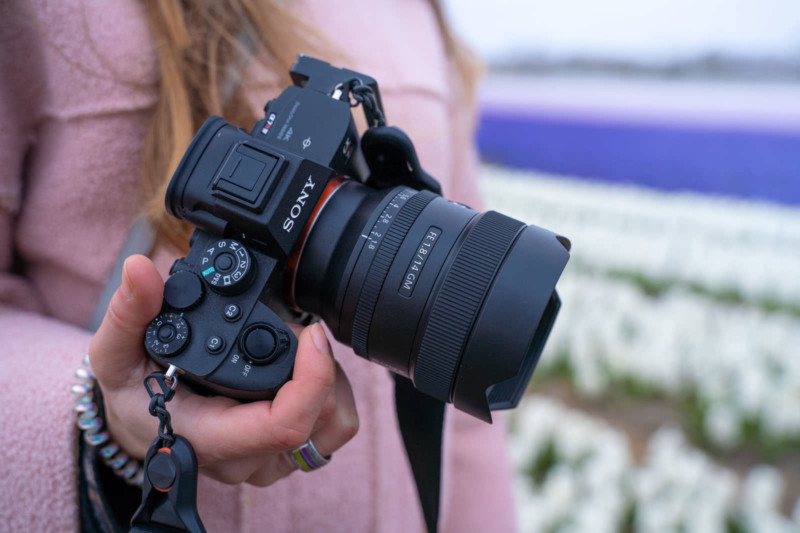
Other than the size and weight, there are not many surprises when we look at this lens. It has a dedicated AF/MF switch, one extra button, and a switch to set the aperture to click-less. It looks like Sony implements this on all of their newer GM lenses which also makes them great for video.

The aperture can be set manually with the aperture ring and goes from f/1.8 to f/16 and then there’s the ‘A’ to let you control the aperture via the camera body.
The lens has a nondetachable hood to protect the front element from bumping into things. It has no filter thread, but surprisingly just like the 12-24 f/2.8 GM, there’s a possibility to use filters on the back of the lens.
Sharpness, Distortion, and Bokeh
Let’s take a look at how this lens performs in the field. Someone interested in a wide-angle prime like this is most probably going to use it for landscapes, cityscapes, architecture, and of course: astrophotography. Now over the last few weeks, I decided to leave my 12-24mm GM at home and simply carry this lens with me to photograph.

To start off I photographed some Architecture. This was mainly to check the distortion and sharpness of the lens.

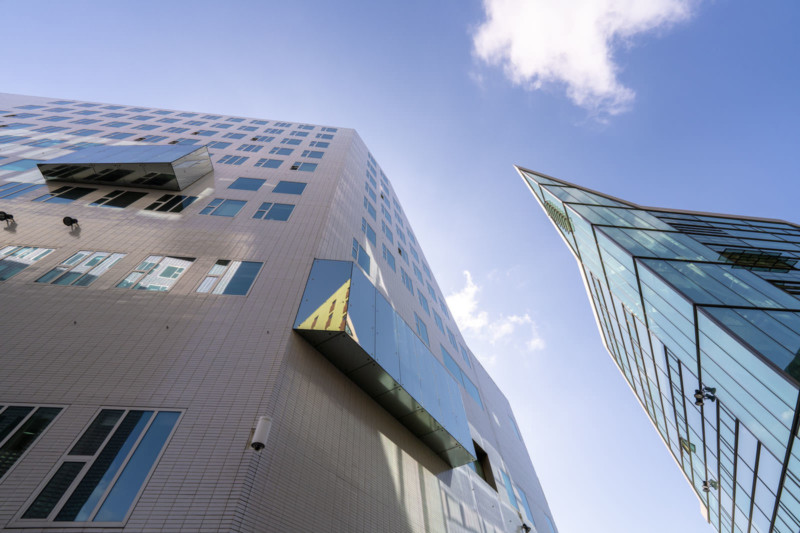

I tried to shoot some interesting angles of modern buildings in the city of Amsterdam. When we look at the photos (especially the last one) we can see there is not much noticeable distortion going on. Upon writing this article, no lens profiles were available for this lens so I didn’t do any corrections. But even without any lens profile applied, lines look straight.
Let’s take a look at the sharpness on this image:

Taken at f/8 from a perfectly still tripod, take a look at a crop of the left side:

Even at the complete edge, everything is still super sharp and we can see all the little details from the bricks.
Now here is a corner crop from the bottom right:

Even the sharpness at the absolute corner is impressive.
This lens has two XA (extreme aspherical) elements along with two ED (Extra Low dispersion), one Super ED, and one aspherical element.
So yes, with a quick test the sharpness looks great, as one might expect from a Sony G-Master prime lens. But there’s something that really impressed me: The center sharpness at f/1.8. Let me show you an example, and with that I will immediately address the bokeh of this lens. And I hear you thinking: who would use the bokeh of this lens anyway? And you might think differently when you see this:

This was shot wide open at f/1.8. I was really impressed with the nice soft bokeh around the subject. But before we look at some other bokeh images, let’s take a look at the sharpness at f/1.8.
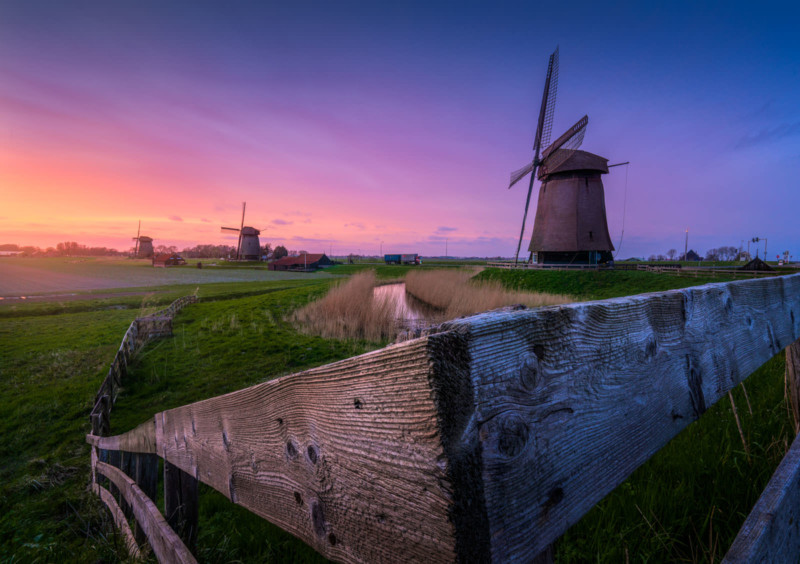
When I saw this center crop I was extremely impressed. We’re looking at more than 100% here (probably 200 or so) and you can see every little detail on the letters and the little carvings on the lens. What impressed me the most is that there are basically no aberrations and ‘glow’. You know when you use fast lenses wide open? You will often see a tiny bit of glow around the bright and contrasty parts. With this lens, it’s absolutely zero.
And when we are checking the bokeh anyway, let’s take a look at some more shots with a creamy background. Because it’s actually quite fun to shoot extreme perspectives with creamy backgrounds with an extreme wide angle lens:
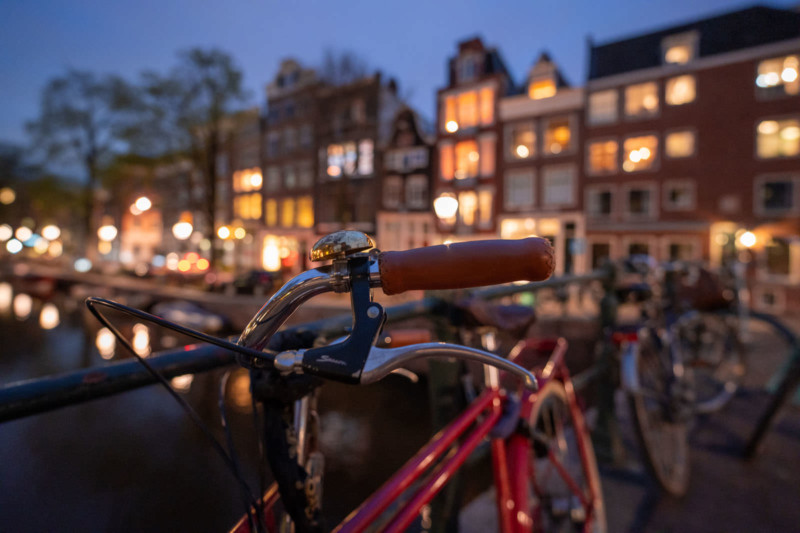

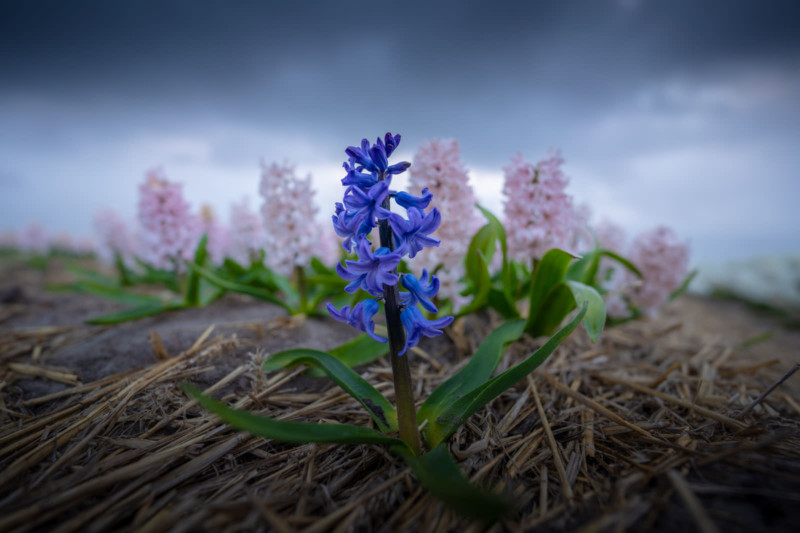
All of these images were taken by moving very close to the subject and utilizing the minimum focus distance, all shot wide open at f/1.8
As stated in Sony’s promotional material:
BEAUTIFULLY SMOOTH BACKGROUNDS: A circular 9-blade aperture on this 14mm lens creates beautiful circular background bokeh defocus effects with a large F1.8 aperture.
And they’re not wrong.
Read also: Sony 14mm f/1.8 G-Master Review: An Impossibly Good Lens
In The Field
Enough of showing the (technical) capabilities, let’s take a look at some of the shots I took with this lens that you know me for. I love using this kind of wide-angle lenses with strong foregrounds, so I took it to an area with lots of sand structures. Because of the strong winds and storms we were encountering for the past weeks in this country, sand is great to use in compositions as it makes all kinds of interesting patterns.

Dark skies and sometimes a patch of light made for nice conditions in this area. By getting low to the ground I could get these textures and lines formed by the winds nicely in the frame.

For this image I shot straight into the sun, again utilizing the textures lit up strongly by the sunlight. This shot is also a good demonstration of the sunstar of this lens, that’s fairly decent. It’s not bad, also not amazing (the streaks around the sun are not super pointy), but simply works well. Also, this was shot at only f/11.
Also, notice how there is almost no flaring going on. Sony mentions that Sony’s new Nano AR Coating II is evenly applied to the element surface of the lens, effectively minimizing internal reflections so that flare and ghosting do not occur.
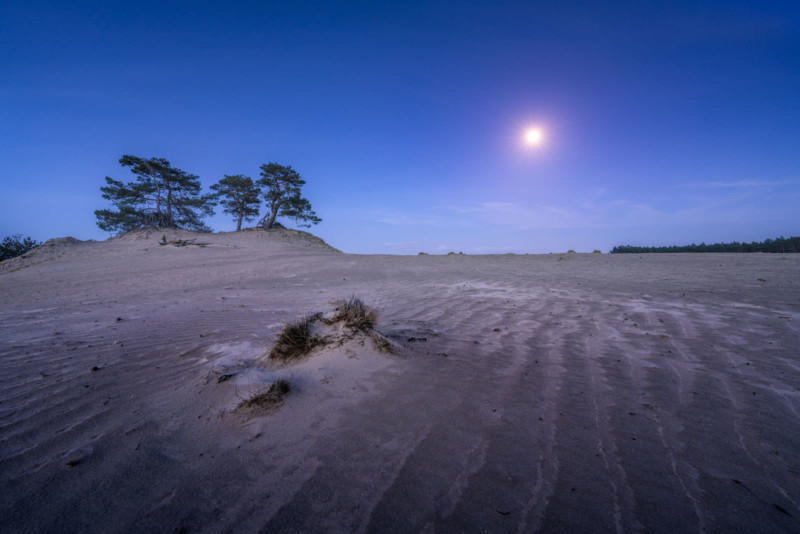
I stayed a bit longer to also capture the rising moon, creating the ‘moonstar’ on this image, shot at f/8. The moon also did a nice job lighting the foreground textures here.
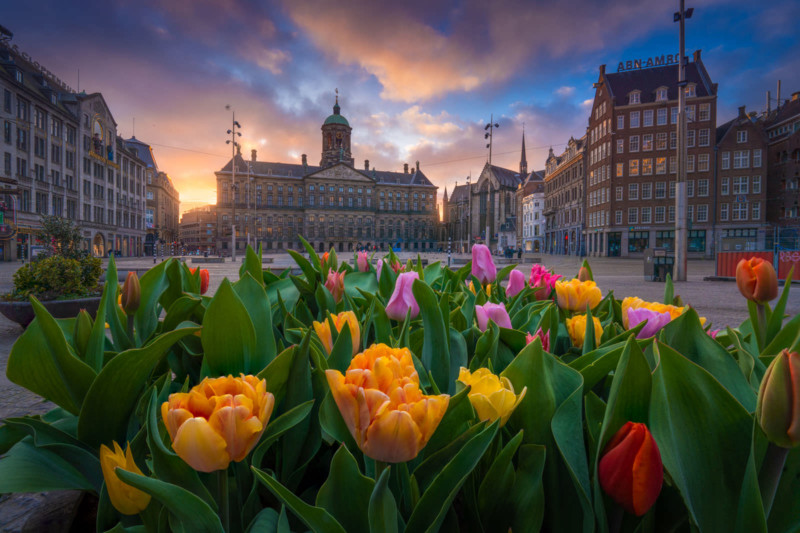
It’s April, so the tulips are in town. The city of Amsterdam also has a lot of them.
In this image, you can see the Rijksmuseum. I like to get low and close to the flowers to get a nice 3d effect in an image. Then I use a technique called Focus stacking (taking multiple shots with different focus) to get the entire image from front to back perfectly sharp.
Before the tulips, we also had the Cherry blossoms. And I want to show you 2 completely different images, taken at the same scene with the same lens:
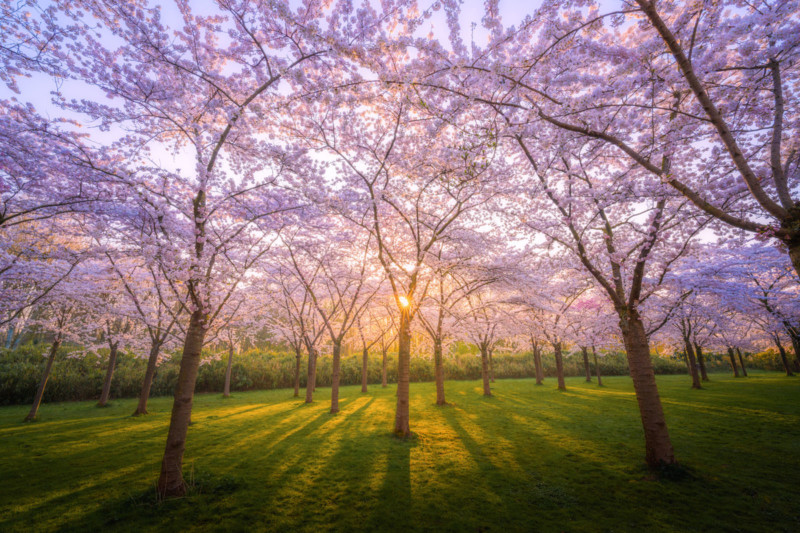
An image of the cherry blossoms shot at f/9, is another nice demonstration of the sun star this lens creates. Against edges, it looks really nice.
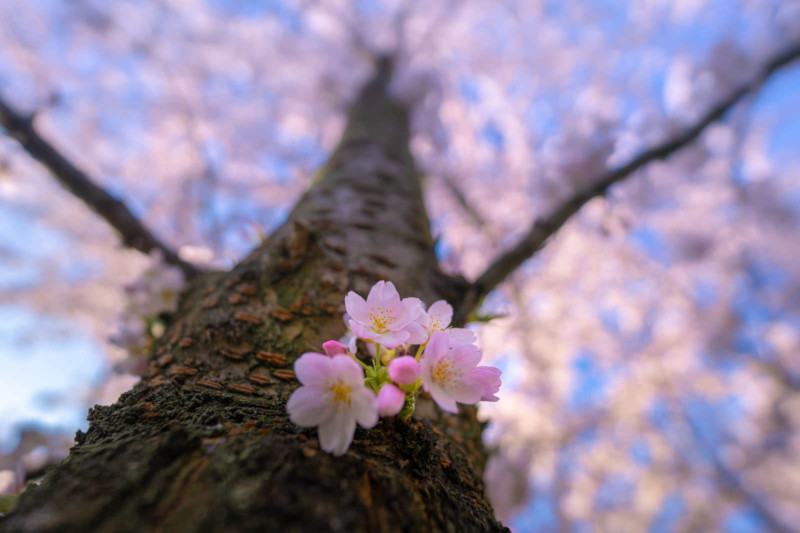
Then can you believe this image was shot with the same lens? For this I shot at f/1.8, moving very close to the cherry blossom flower, pointing up the camera against the sky. A completely different image, but shot at the same place, with the same lens. Just to show you some interesting capabilities.
To continue with the flowers, I shot this image of a hyacinth field:

A storm cloud was moving over the field and a rainbow popped up just in the middle of these lines. I wanted to show this image to demonstrate the ‘power’ of a sharp lens combined with the A7RIV. The 14mm f/1.8 GM is very sharp, so using it on the high megapixel camera you’re able to easily crop 200% and still have a sharp image:
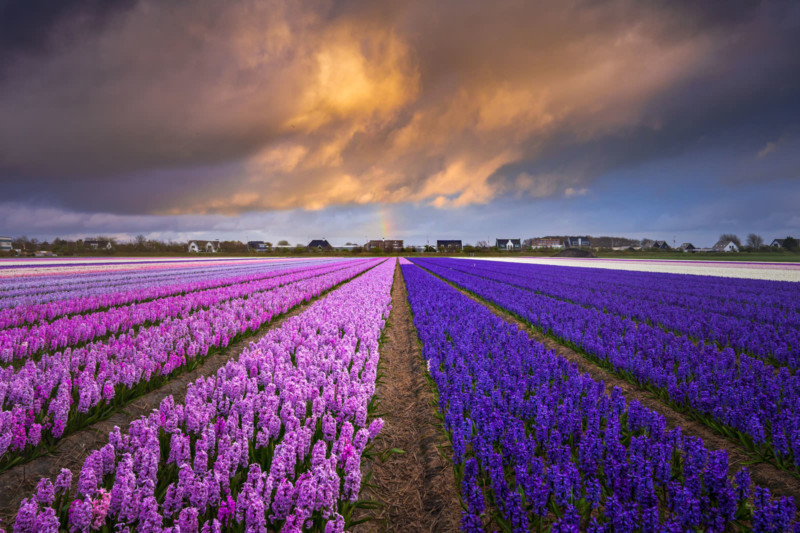
I later decided that I liked this crop more: it creates more impact with the storm cloud and the rainbow. And it’s still very sharp with plenty of resolution even for print.
Astrophotography
And of course I was very interested to see how this lens would perform for astrophotography. Unfortunately, There were not many clear skies when the moon wasn’t around, so I wasn’t able to photograph the milky way (yet). I did however test the lens for just shooting the stars to have a good idea of what it is capable of in this field of photography. I was able to do a shooting session in a darker part of the country when the moon wasn’t up in the sky yet.
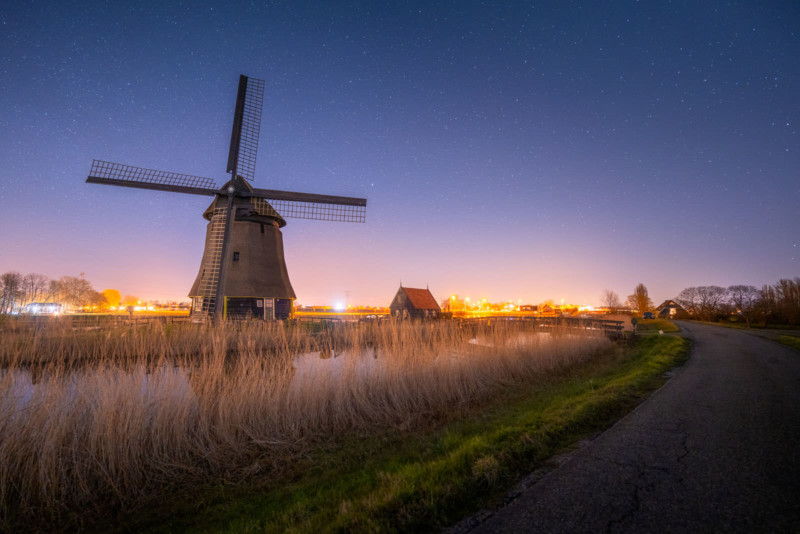
Here’s an image of a windmill with a starry sky. Shot at f/1.8, 13 seconds, ISO 1600. Let’s take a closer look at the corners and center of the image:
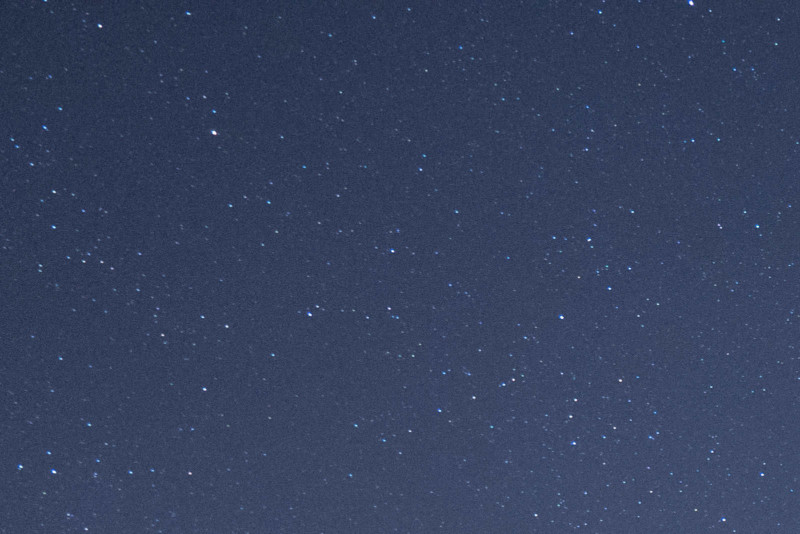
When we look super close at the stars on the top left of the images, they look extremely sharp for the wide-open aperture. Not only that, there is almost no coma, chromatic aberrations, and glow.
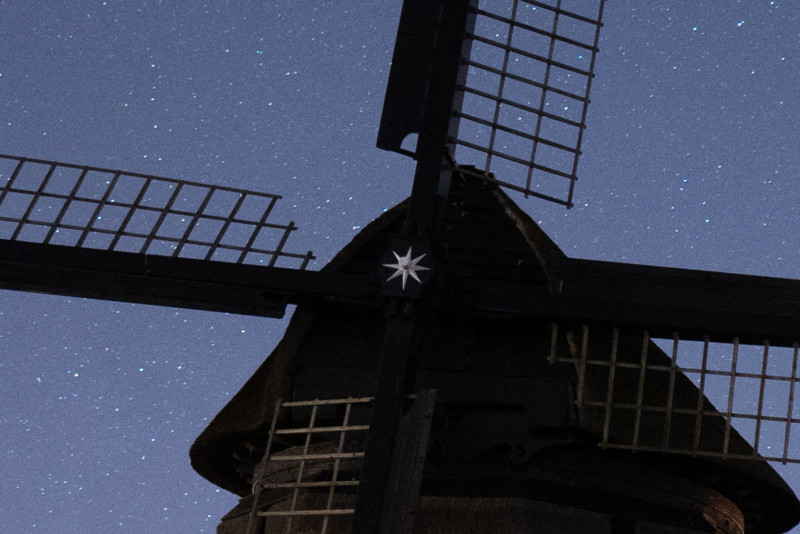
Here’s another close crop of the windmill. Tack sharp, and also notice the sharpness of the star of the windmill. Overall, I was extremely impressed.
Here are 2 other images of the night:
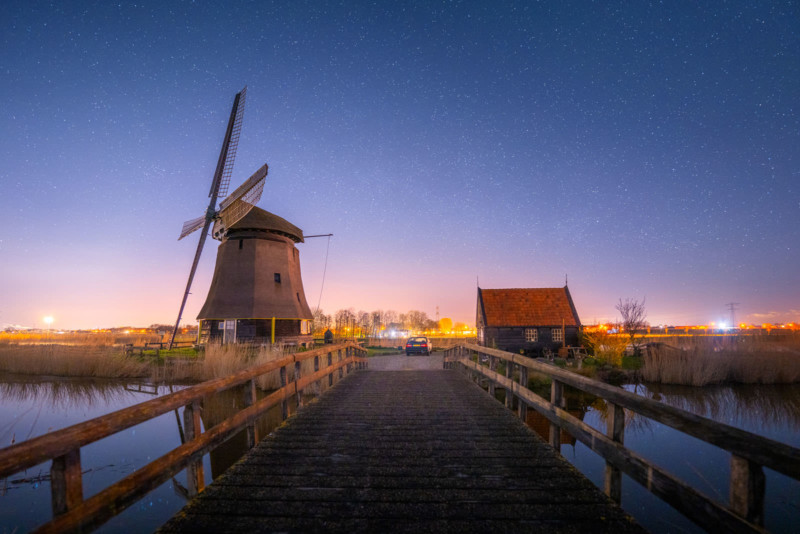
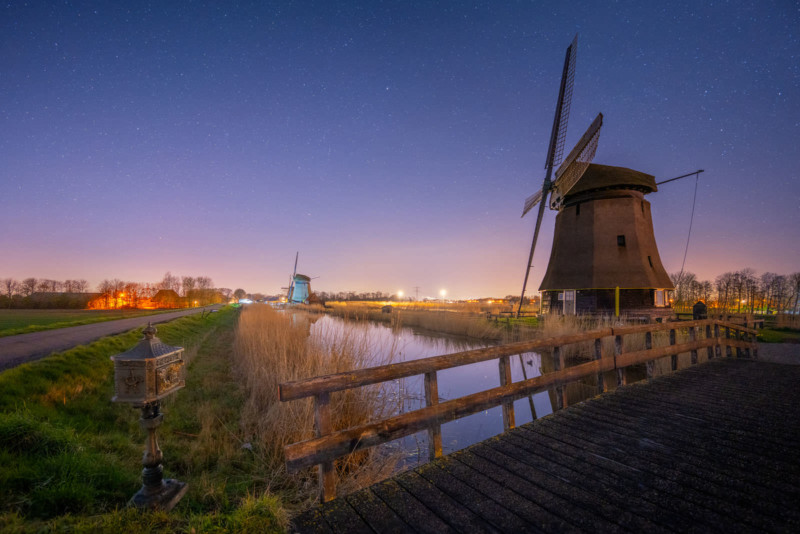
The f/1.8 aperture also makes it possible to focus very easily in low light. You can simply see all the stars in your live view and focus on them.
Some clear skies and a new moon allowed me to do some more shooting with the lens. Both of these images were shot wide open at f/1.8 (foreground was focus stacked to get good sharpness there. And I lit the ripples in the sand from the side with my flashlight) and the lens didn’t disappoint again. Very sharp stars all over the frame.
Note: When shooting these images we had night curfew in the Netherlands. I had an exemption from it because of my job.
These were both shot at f/1.8, ISO 2000, 13 seconds.


Conclusion
I think I said everything that I wanted to say about this lens. Sony did it again. They completed their wide-angle prime road map (for now?) with this beautiful lightweight 14mm f/1.8 prime lens. Honestly, I can’t really think of any other lens I would want for landscape photography right now. With native lenses like the 12-24mm f/2.8 GM, 16-35mm f/2.8 GM, 14mm f/1.8 GM, 20mm f/1.8 G, 24mm f/1.4 GM, and the 35mm f/1.4 GM, there is really nothing missing in my opinion. I have been an ambassador for Sony since the original Sony a7 and I have been nagging them ever since for lenses like this. And now they’re all here. I think the engineers can finally go on their holiday.
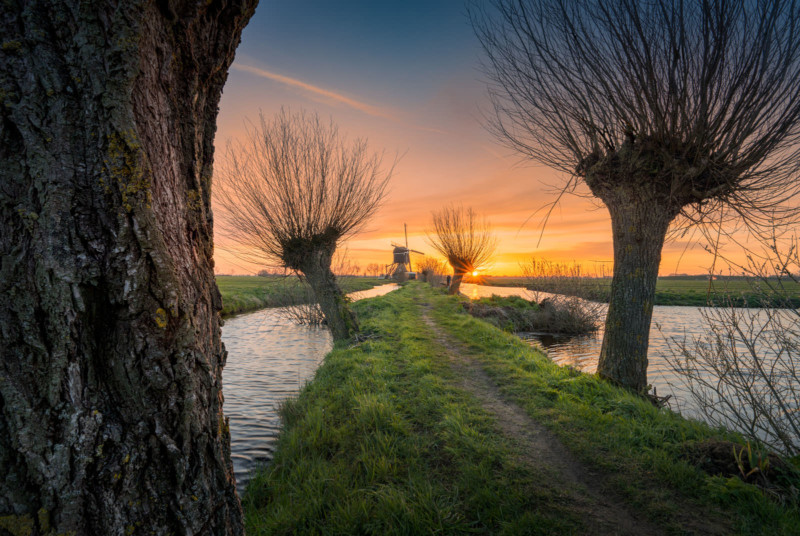


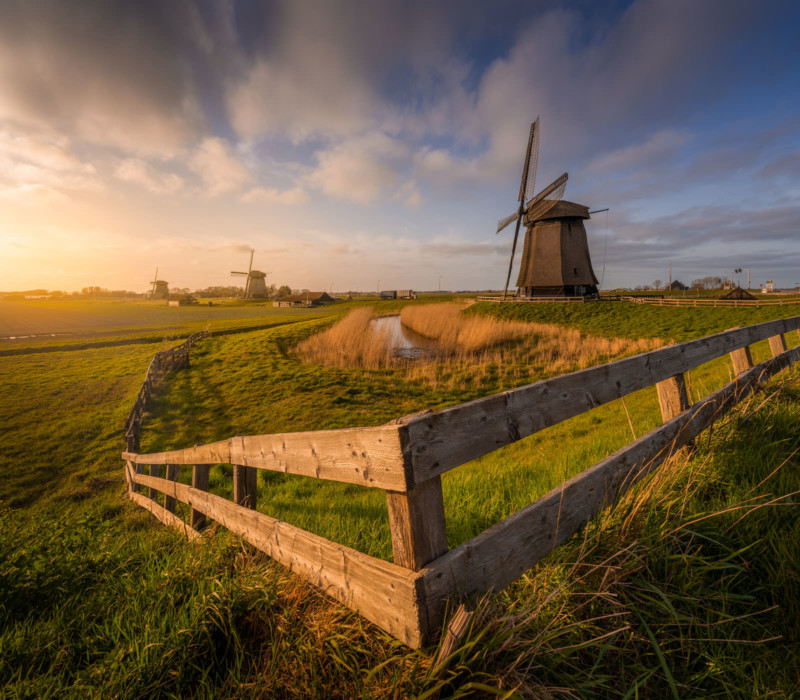
Here’s what you should know about the 14mm f/1.8, in short:
- Small and really light design of only 460g
- Very sharp corner to corner
- Extremely sharp in the center even at f/1.8
- Perfect for astrophotography with almost no coma and aberrations at f/1.8, even at corners
- Unexpectedly nice and creamy bokeh at f/1.8. You can go very creative with wide angle close ups
- Decent sunstar
- Almost no flaring
- No filter thread in front, but possible to use back filters
Thanks for reading!
About the author: Albert Dros is an award-winning Dutch photographer. The opinions expressed in this article are solely those of the author. His work has been published by some of the world’s biggest media channels, including TIME, The Huffington Post, The Daily Mail, and National Geographic. You can find more of his work on his website, or by following him on Facebook and Instagram. This article was also published here.